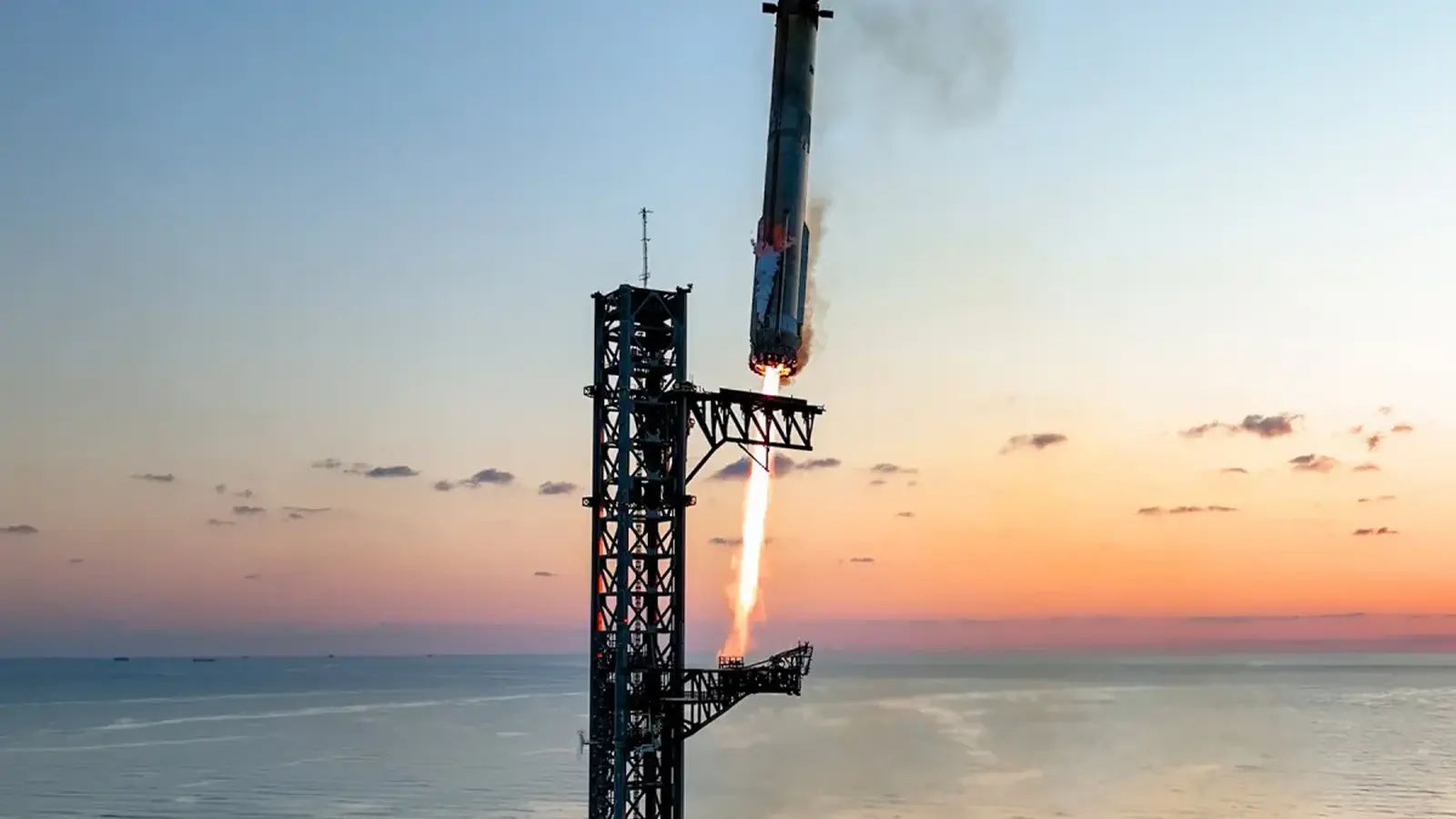4 Minutes
Starship’s 10th Test Flight: What to Expect
SpaceX is preparing for the 10th test flight of Starship, the massive 121-meter launch system designed to be the most powerful rocket ever to fly. Launches from the company’s Starbase complex near Boca Chica, Texas, are consistently high-stakes events: at liftoff the combined Starship and Super Heavy stack produces roughly 17 million pounds of thrust as it climbs away from the pad. Minutes into the mission the Starship upper stage normally separates from the first-stage Super Heavy booster.
Why there won’t be a tower "catch" this time
For several earlier test flights, SpaceX’s 71-meter Super Heavy booster has executed an impressive — and autonomous — return to the launch site, where giant mechanical arms on the launch tower secure the descending vehicle mere meters above the ground. That visually spectacular maneuver (often called the “catch”) has become a highlight for spaceflight fans.
However, SpaceX confirmed it will not attempt the tower catch on flight 10. Instead, the Super Heavy booster will perform a controlled splashdown in the ocean. The decision is driven by test objectives: engineers plan to trial a steeper, more aggressive descent profile to evaluate performance and improve booster efficiency. Attempting that riskier trajectory while targeting a precise tower capture could endanger the expensive and critical launch tower.
Risk vs. reward: why splashdown makes sense
Splashdown allows SpaceX to validate descent and reentry control algorithms without exposing ground infrastructure to potential damage. The trade-off is losing the immediate opportunity to recover and reuse that particular booster — but the data gained may enable more reliable future landings and higher operational efficiency.
Product features and technical highlights
Key Starship system features relevant to this mission include:
- Heavy-lift capability: the full stack is engineered to carry large payloads to orbit, cislunar space, and beyond.
- Reusability focus: both Super Heavy and Starship are designed for rapid turnaround reuse, analogous to Falcon 9 operations.
- Advanced descent controls: new descent angles and reentry profiles are being tested to improve propulsive efficiency and thermal loads management.
- Integrated launch tower systems: the mechanical arms (informally dubbed “Mechazilla”) enable precision captures when conditions permit.
Comparisons, advantages and market relevance
Compared with SpaceX’s Falcon 9 — the current workhorse known for routine booster recovery and reflight — Starship aims to scale payload capacity dramatically and reduce cost-per-kilogram through full-stack reusability. Advantages include higher payload mass to orbit, potential direct cargo runs to the Moon or Mars, and economies of scale for satellite deployment and ambitious deep-space missions.
Use cases and future outlook
Starship’s target markets span commercial satellite constellations, lunar logistics, crewed Mars missions, and national space programs requiring heavy lift. While flight 10 sacrifices an on-site booster recovery to validate a riskier descent, SpaceX intends to return to tower-based captures on later flights and ultimately recover and reuse both stages routinely. Upcoming tests also aim to land the Starship upper stage back at Starbase to enable full-stack reuse.
Conclusion
Although fans will miss the cinematic tower catch this mission, the controlled ocean landing is a pragmatic step. It prioritizes vehicle performance data and infrastructure safety while advancing reusable rocket technology and improving long-term operational efficiency for Starship — a system that could reshape the heavy-lift launch market.
Source: digitaltrends


Leave a Comment